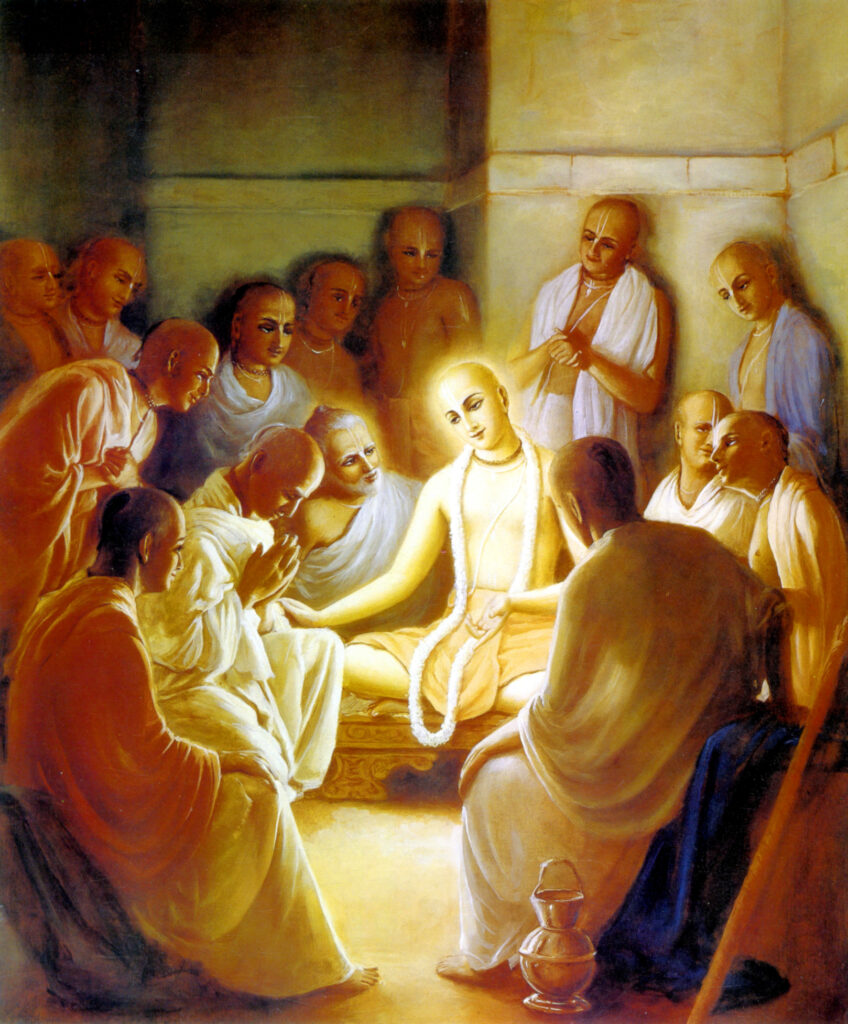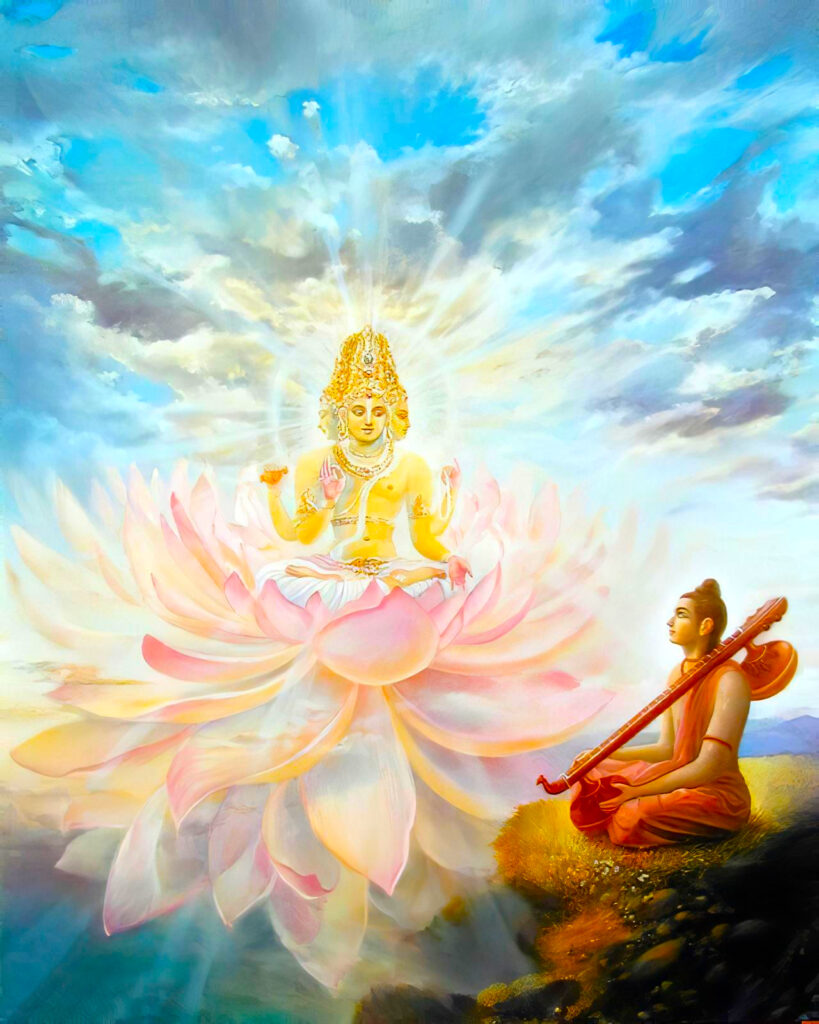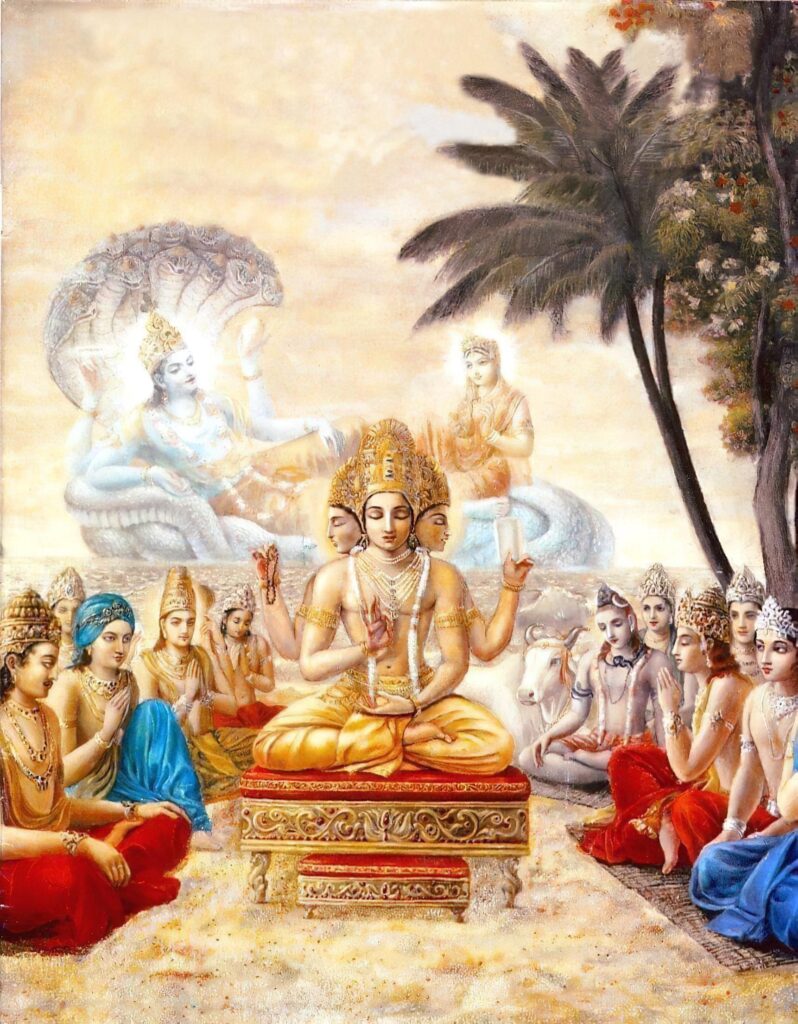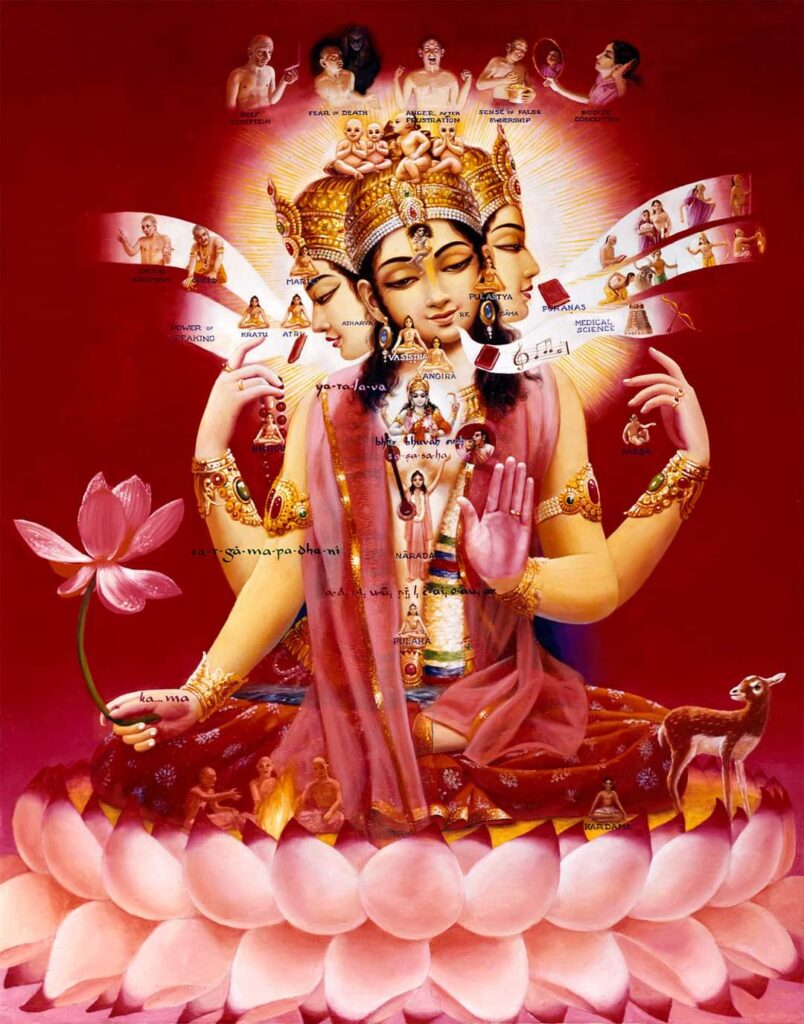Astanga-yoga is recommended in several places of the scriptures as a process to allow ones who are not ready to practice the path of devotional service to gradually achieve transcendental realization. Vidhura recommended it to Dritarastra after he retired from the palace, for example, understanding that after committing so many offenses during his life, he would not be able to adopt the process of Bhakti.
Nowadays there is a great interest in yoga, but with so many fashionable styles and the almost universal goals of controlling stress and toning the body, the essence of the yoga process is lost, to the point that most simply relate the word “yoga” with physical exercises.

The original process of transcendental meditation is called Astanga-yoga, or the eight-fold yoga system (asta means “eight” and anga means “limbs” in Sanskrit), it consists of eight levels of practice: Yama, Niyama, Asana, Pranayama, Pratyahara, Dharana, Dhyana and Samadhi. This is the process mentioned in the Bhagavad-Gita and other scriptures, which was practiced by yogis and transcendentalists through the ages. All the modern processes of yoga derive from this original eight-fold system, but in most cases important parts of the process are lost, discarded, or modified.
Continue reading








